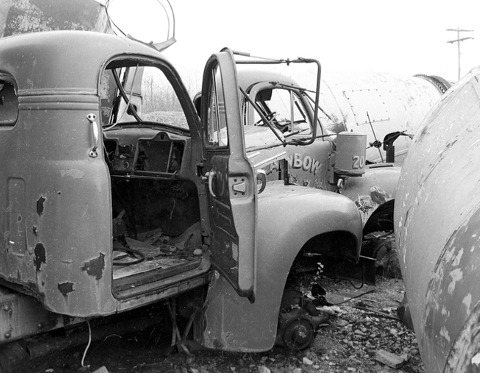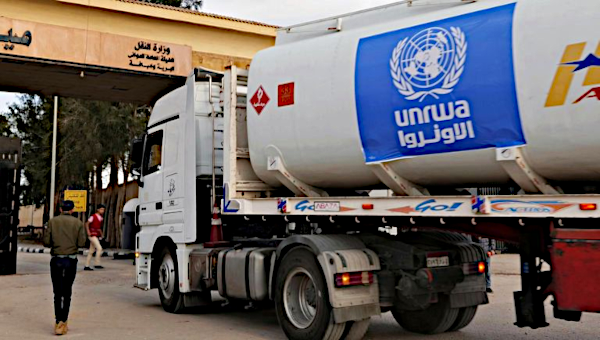Hyped as “Northern Ontario’s oil sands,” the Ring of Fire mineral deposit is inching closer to development. Noront Resources, which now holds 75 per cent of the active mining claims in the area 400 kilometres north of Thunder Bay, has recently announced plans to begin mine construction in 2018. Developing North America’s largest chromite deposit, the company claims, will create “jobs, growth and long-term prosperity for Northern Ontario.”

And yet the government’s decision to provide such a massive subsidy to the mining industry has provoked little dissent from progressive circles in Ontario. Should we, in these times of austerity, really be doling out billions of dollars to big business? What can we expect from development in the Ring of Fire, anyway? Will the new mines really bring prosperity to the mostly Indigenous communities of the Far North?
There is, to be sure, good cause for skepticism. Successive Ontario governments have been remarkably accommodative to the mining industry’s political agenda, and the province’s mining policies have long prioritized company profits at the expense of community development and ecological integrity.
Undermining the Environment
The Wildlands League’s recent report on De Beer’s Victor diamond mine near Attawapiskat is a case in point. In reviewing De Beer’s reports on water quality submitted to the Ministry of the Environment, the League found that all of the data from the reporting stations downstream from the mine were missing from official sources. When the League contacted the Ministry for clarification, its only response was an assurance from the company that its reporting was in full compliance with the Ministry’s requirements. However, the missing data, which the League later acquired from a “concerned party,” revealed a tripling of concentrations of methylmercury – a neurotoxin – in the river downstream from the mine. Despite this serious health risk to the residents of Attawapiskat, who rely on the river system’s fish as a major food source, the Ministry of the Environment did not push De Beers for more thorough reporting – or action. Given the government’s record in Grassy Narrows, this is alarming, to say the least.
The Victor mine is not the only cause for concern. There are more than 4,400 abandoned mines strewn throughout the province. These abandoned mines, according to last year’s Auditor General’s Report, “pose risks to public health and safety and the environment.” However, the same report found that the Ministry of Northern Development and Mines conducted only “minimal” inspections on abandoned mines, and has no long-term plan for their rehabilitation. In the five years leading up to the report, the Ministry inspected only 6 per cent of the abandoned mines, including only 142 of the 362 “high-risk” sites. Moreover, while the Ministry has estimated a total clean up cost of $372-million for 56 of the most contaminated sites, it routinely allocates only $4-million of its budget for this purpose. On top of that, it has no plans to carry out detailed cost estimates of the remaining “highest-risk sites.”
In Pickle Lake, the risk became reality when the town’s development plans were nixed by the Ministry of Mines and Northern Development because of the high levels of arsenic contamination at an abandoned gold mine site. While the Ministry has promised to initiate “a study to identify areas of concern,” it will take “several years to get off the ground.”
In Sudbury, the two mining giants, Vale and Glencore, have also benefited from lax environmental oversight. Just last year, residents of nearby Copper Cliff were forced to stay indoors, and roads leading to town were closed after a plume of toxic nitrous oxide leaked from the Vale smelter. And yet, both companies have been granted exemptions to the province’s “tough new air quality standards,” which came into effect in July of this year. Vale’s extension will run until 2021, while Glencore’s, granted earlier this year, is good for ten years.
This is nothing new. When the province first began to issue control orders on sulphur emissions in the 1970’s, both Inco and Falconbridge (Vale and Glencore’s respective predecessors) were routinely granted extensions in back room negotiations with Ministry of Environment officials, this despite the fact that a 1970 Federal Government analysis estimated the total cost of sulphur emissions to the Sudbury region at $465,850,000 per year (close to $3-billion today, accounting for inflation). In fact, Inco was able to delay the full implementation of its control order until such time as new technologies would make the target “economically feasible.” In the end, the new technologies that Inco adopted also allowed it to slash its workforce in the 1980’s and 1990’s. The local Steelworkers Union, the city’s most important countervailing force to the company’s power, was decimated as a result.
By that time, residents of Happy Valley had been forced to abandon their homes, and thousands of lakes in the Sudbury region had been permanently damaged by their high acid content, with major repercussions for the livelihoods of Indigenous communities like Atikameksheng (Whitefish Lake First Nation).
Mining the Public
But lax oversight is not the only way Ontario’s mining policies put profits before people and the environment. Ontario’s mining taxes are also extremely generous. Mining profits above $500,000 are taxed at a rate of 10 per cent. Taxes are even lower for “remote mines” where the rate is only 5 per cent. And as the KPMG Guide to Mining Taxation in Canada shows, Ontario’s tax code offers no shortage of deductible expenses to reduce book profit, and thereby lower taxes.
As a result, Ontario’s revenue generation from mining is extraordinarily low. In 2014, Ontario produced a record $11-billion worth of minerals, roughly 25 per cent of all Canadian production value. Yet government revenues from minerals were at a twenty-year low and the provincial mining tax only generated $18.6-million. To put that into perspective, that means the provincial treasury received only 1.6 per cent of the total mineral wealth produced in the province. What’s more, in 2014 the Ministry of Northern Development and Mines’ expenditures amounted to $41-million. Without even considering mining’s massive environmental and social costs, that’s a net loss of $22.4-million.
This paltry sum is by no means unusual. In fact, the Auditor General’s report indicates that “the amount of mining taxes and royalties that the province has collected from mining companies over the last 20 years has averaged less than 2 per cent of the value of minerals extracted.”
To make matters worse, Ontario’s tax code bars mining municipalities from taxing underground operations. Phil Vinet, the mayor of Red Lake – a gold mining town – equated “the perpetual fight to squeeze more money and basic information from the mining companies and the provincial government” to “farting against thunder,” a hopeless – and seemingly painful – pursuit.
“The $33-million per year subsidy to Vale and Glencore alone is almost twice the amount Ontario generated from the mining tax in 2014.”
If tax breaks weren’t enough, the industry receives any number of government subsidies to help lower costs. For example, last year Glenn Thibault, Sudbury MPP and current Minister of Energy, announced the extension of the province’s Northern Industrial Electricity Rate Program, initially slated to expire in 2016. Under the program, Vale will receive $20-million annually, Glencore $13-million. The $33-million per year subsidy to Vale and Glencore alone is almost twice the amount Ontario generated from the mining tax in 2014. Meanwhile, countless low-income Ontarians, faced with some of the highest energy costs of any jurisdiction in North America, often must choose between keeping the hydro running or putting food on the table.
In light of this record, the prospects for meaningful community development – or “prosperity” – for the 20,000 people of Ontario’s Far North seem remote indeed. Only sustained political action on the part of the communities themselves can ensure the transfer of any of the material benefits from industry, which will be only too happy to unload so many of the burdens. Environmentalists and social justice activists in the south must do their part to hold the government and industry accountable if mining development goes forward. The risks are far too real to ignore. •





